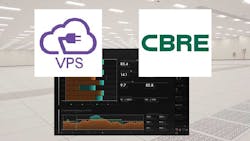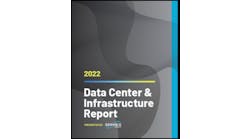Software-defined power will be available to more data centers through CBRE Data Center Solutions, which will offer a suite of services that unlock stranded power capacity to its global data center clients. CBRE Data Center Solutions manages more than 700 data centers around the world, so its partnership with Virtual Power Systems (VPS) will make software-defined power available on a broader basis.
Software-defined power extends virtualization to the power plane, offering new levels of efficiency and automation to data centers by using software management to reallocate power between racks and servers based on real-time usage patterns. Virtual Power Systems is a startup that offers software, hardware appliances and lithium-ion batteries to optimize power distribution within a data center.
“The VPS solution will help our clients maximize the productivity of every watt of data center capacity,” said Zahl Limbuwala, CBRE’s Executive Director of Strategy and Market Enablement, Data Center Solutions. “In conversations with our clients, efficiency, agility, scale, and innovation are hot topics. VPS’s ground-breaking Software-Defined Power technology will help them on the journey to autonomous digital infrastructure.”
“By virtualizing data center power infrastructure, our clients have the potential to reclaim stranded capacity and enhance their system resiliency while simultaneously lowering costs,” said Martin Murphy, Chief Operating Officer, Data Center Solutions for CBRE, who said VPS technology would allow it to. “enhance system optimization in ways previously unavailable.”
Unlocking Stranded Power
In addition to offering VPS’s suite of services that unlock stranded power capacity to its clients. CBRE will also be a preferred deployment partner for VPS customers.
VPS uses a combination of software and distributed batteries to conduct peak shaving, using the batteries to store power and allocate it to the system when needed, creating a more elastic system for distributing power. The batteries and power flows are managed by the company’s software suite, which allocates power from by utility sources, UPS systems and batteries.
“CBRE is the world’s leading data center management company, and we’re excited to work with their engineers and facility managers to help their clients optimize power utilization,” said Dean Nelson, CEO of Virtual Power Systems. “By unlocking stranded power, data centers can reduce costs and simultaneously increase resiliency.
“We are in the midst of an unprecedented data tsunami boosted by the global pandemic and exponential growth in Internet usage,” Nelson said. “Today’s data centers need to be agile, efficient and highly reliable. Software-Defined Power removes expensive over-provisioning, increases system utilization and protects workloads through continuous monitoring and actuation of the power infrastructure.”
Utilization Benefits for Colo Providers
VPS recently announced that it would be working with edge computing startup EDJX to provide advanced power management and backup for its edge nodes.
Edge workloads are one opportunity for software-defined power. But Nelson says the most promising market for VPS technology is the service provider market. On a recent Data Center Frontier Show podcast, Nelson noted that many hyperscale operators already have some form of in-house technology for software-defined power.
“The colocation space is the place that has the most stranded capacity, because they have multiple customers, and need buffers and redundancy to guarantee uptime for their SLAs,” said Nelson. VPS tracks usage in real time and enables colocation providers to “inject” stored energy to racks and servers requiring additional capacity, allowing providers more flexibility to allocate power across a multi-tenant footprint.
“You can increase the utilization yet still maintain your uptime,” he said. “When you can do that, your costs go down, because you’re utilizing more capacity that you would otherwise have to build out. And guess what? Your margins go up.”






